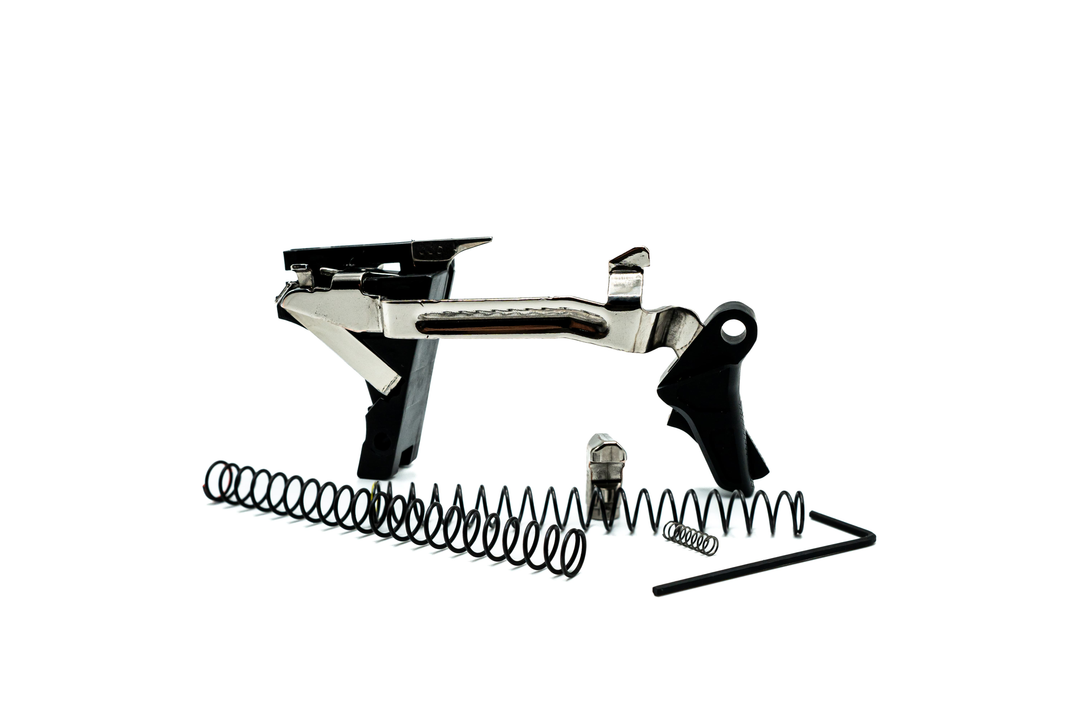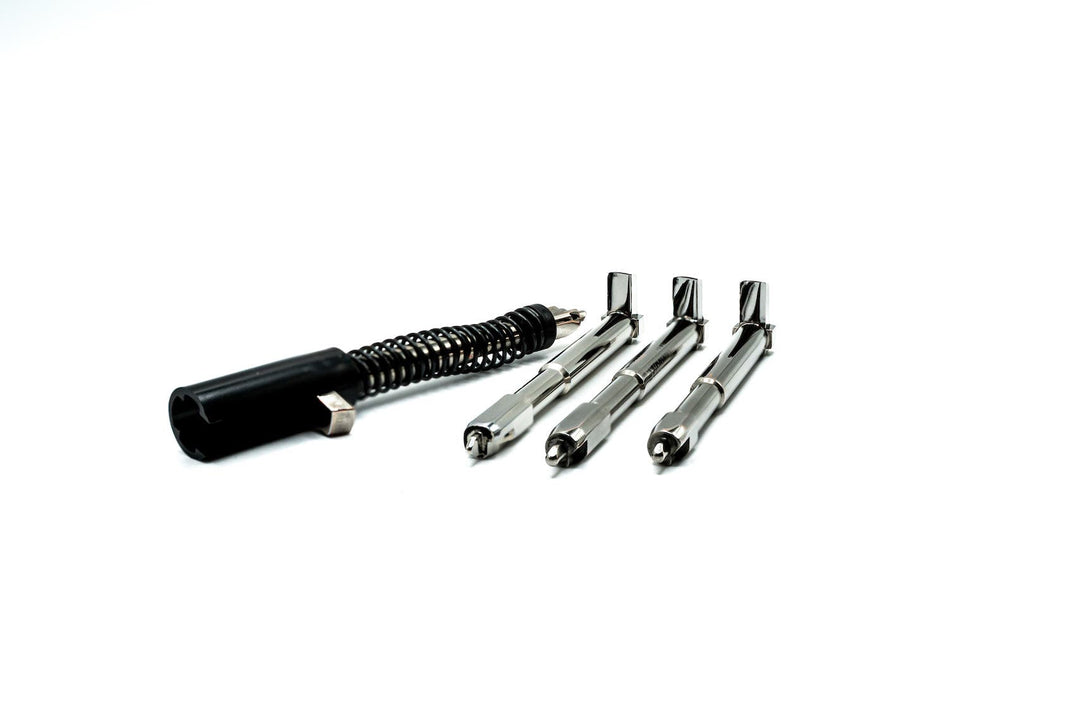Mastering Trigger Press - JG VEX Flat Face Trigger Shoe
[00:00:00.05] - Johnny Glock
All right, guys. Hey, what's up? Johnny Glock here, and I am about to demonstrate the proper way to press a trigger. Now, I know a lot of people say there's no proper way of doing this or proper way of doing that. My argument to that is always something like, you don't see people shooting saucer and teacup anymore or half Weaver. We've adopted this isosceles type of... And there's nuances to the Isosceles style of presenting your gun, your grip, and all that. But the fundamentals are basically what they are. We're not doing this, we're not doing this, we're actually doing this. So there is a proper way, that's the proper way nowadays, that we are taught to shoot. There's always a learning curve with new equipment. I remember an illustration when I went from iron sights to a red dot. That just doesn't happen flawlessly. When you go from a curved shoe to a flat shoe, once again, it's an equipment change. There's going to be some new things that you're going to have to learn, and there's going to be a learning curve, and you're going to have to learn how to do things a little bit a different way.
[00:01:19.16] - Johnny Glock
Not all trigger shoes are the same. I'm explaining why our trigger shoe is built this way. I spoke to this in another video about majorly what I do is I take information from people that are in the top of their games, and I extrapolate all that information from them, and then I build trigger systems around it. And part of the trigger system is a trigger shoe. So with everything that they tell me, and then with some of my input, knowing about physiology and physics, I can come up with something that is going to be as efficient as possible, not only for mechanically, but efficient as possible for the shooter. And that is why I'm making this little video about trigger press. Basically, What should not be done, especially with the flat shoe, we're going to address this flat shoe that I have. What should not be done is you should not be grabbing deep to your knuckle. It's a flat shoe. It's got a flat face, so you have to land flat on it in a way. If you're going deep to your knuckle, that crease right there is going to catch where the trigger safety tab depresses, and you are not going to cleanly disengage.
[00:02:43.01] - Johnny Glock
You can hear Okay, so you're not going to cleanly disengage. You're going to have a hiccup there. But as you can see, my finger is all the way in. Now, you have to be careful sometimes with a single stack, because with bigger hands, you're going to have the propensity to want to do that. So basically, another thing people do is purchase high, very high on the trigger right up there. And when you're purchasing high, you're going to snap as well, even if you are using the pad of your finger. And then crucially, if you're high and you're just going to... I can barely even get it to disengage. So let me explain something. The reason that we design this trigger this way is to force you to have a proper press, which means you don't pull the trigger, you press the trigger, and you press it with your finger pad. That is the most efficient way to do it. It's the pad of your finger flat on the shoe, and as you can see the trigger safety tab, you will disengage that trigger safety tab all the time. It will 100% disengage if you're landing flat on the safety with the pad of your finger.
[00:03:59.14] - Johnny Glock
You have the most dexterity with the pad of your finger. You also have the most control with the rest of your hand if you're just using the pad of your finger because you're not incorporating a bunch of smaller muscles that could throw things off. That's why a lot of people jerk the trigger and do different things like that. Another thing is this trigger is built on a fulcrum. A very simple illustration of this would be... Let me make a small fulcrum right here. It's just a seesaw. You're not going to press here on the seesaw to make the seesaw drop. It's going to be very hard. Your weight won't do it. But if you come here to the very end, as you can see, it's going to be unbelievably easy to get that fulcrum to move. This set screw right here is a fulcrum point. And as you can see, the fulcrum point starts in direct line with the top of the safety tab. We do that on purpose because that's the apex of the fulcrum. Therefore, if we're forcing your finger to the lower two-thirds of the shoe right there, not only are you going to have easier disengagement of the trigger safety tab, but the trigger, in fact, is going to be lighter down here than it is pulling it up here.
[00:05:24.05] - Johnny Glock
That's why when people do trigger safety, when people do pull tests, they say, Where are you pulling from? The middle of the trigger or bottom part of the trigger? So that's a consideration. But the reason we built these this way is so it's going to force your finger lower, you're going to drop lower, thereby it's going to be a lighter press. And you can see it landing flat on that trigger every time it's going to engage, and then you're going to break the trigger. Reset, break. Now, you can imagine if you're wrapped around really deep like this, you're going to It's almost like you have to engage your whole fist to squeeze this trigger. I can't just pull this off. If you see the rest of my hand going, it wants to incorporate the pinkie and the middle finger, the rest of the fingers. But if I'm here, I can very easily... I can very easily isolate. I can isolate that. In here, I'm not isolating it. I'm I'm having to incorporate more muscles, small muscles that I want to. I want to just incorporate the very least amount that I have to, and I want to drop right on that shoe.
[00:06:40.19] - Johnny Glock
So when I'm trying to actually run the gun, when I'm trying to do that, I can actually... Whereas if I'm in here, you can see the gun, it's wanting to move all over the place. Now, granted, I know I'm going to have some trolls say some stuff here. So that's just part and parcel. But I'm explaining to you why we designed the Vex the way we did. Every once in a while, I get an email saying that there's something wrong with the trigger. The trigger is not disengaging. And honestly, it is not the fact that the trigger is not disengaging. It's that it is not being purchased to utilize its absolute efficiency.










